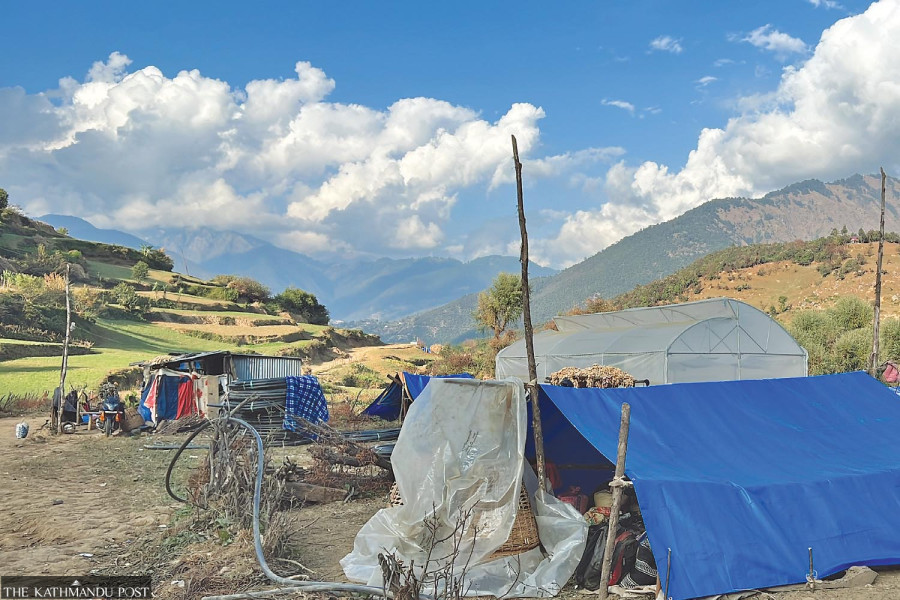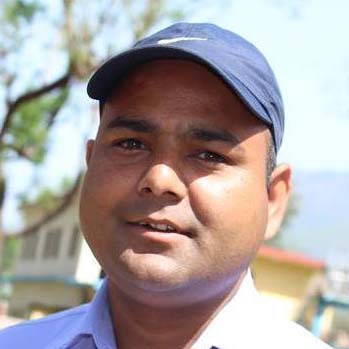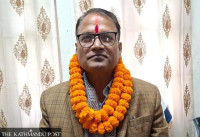National
Jajarkot earthquake survivors are battling monsoon in temporary shelters
Many displaced have fallen ill in affected districts of Jajarkot, Rukum West and Salyan.
Krishna Prasad Gautam
Nandaram Mahar’s family of seven haven’t had a good night’s sleep for the past month or so. The family is currently living at a temporary shelter in Nalgad Municipality-4 of Jajarkot district. What was already an arduous stay got worse after the start of the monsoon—the temporary hut struggles to keep out even normal rain if it continues for some hours, Mahar says. And when it rains, the food grains and clothes get wet.
Mahar’s family relocated to the hut after the November 3 earthquake damaged their home. So moving back to the home is not an option, Mahar says. “The earthquake has weakened the land around the village, so the fear of landslides keeps us awake at night,” he says. “Now that it has started raining heavily, we have no option but to stay awake all night.”
Mahar’s is not the only family that has had to battle monsoon with very few resources. The government has identified a total of 48,517 families in need of rehabilitation in the 6.4 magnitude earthquake. As many as 34,954 temporary shelters have been constructed so far. The rest of the families are forced to stay either in the flimsy tarpaulin tents or staying in the old house damaged by the quake.
Chief District Officer of Jajarkot Umakant Adhikari said that since June, the details of 24,557 families have been included in the disaster management protocol. According to him, after releasing the second tranche of the housing reconstruction aid to build temporary huts, the amount is being distributed through the respective ward offices.
Similarly, the second tranche has been released to 16,000 earthquake displaced families in Rukum West. Chief District Officer of Rukum West Hari Prasad Pant said that Rs400 million was sent to the local level account as second instalment for the construction of temporary housing. According to him, 32,006 beneficiaries have been recorded throughout the district. He informed that an additional budget has been requested from the National Disaster Risk Reduction and Management Authority to provide funds to the rest.
The earthquake victims complain that they are hugely affected by the monsoon rains. Lal Bahadur Mahar of Bheri Municipality-1 said that the clothes and food that gets wet when it rains have to be brought outside and dried when the sun shines. According to him, some families of the village risked their lives as they returned to the cracked houses. “The roof is constantly leaking,” he said. “It is very difficult to live here.”
Many earthquake victims are taken ill in several settlements of earthquake affected districts of Jajarkot, Rukum West and Salyan. Children, senior citizens and patients of chronic diseases are the hardest hit.

“Due to the intense heat and rain, the victims of the earthquake began to fall ill rapidly,” said Dr Priya Shahi of Basic Hospital in Chhedagadh. According to him, 50 to 100 patients come to the hospital daily for treatment of diarrhoea, fever, typhoid and pneumonia. He informed that almost 60 percent of those who come to the hospital are children.
As per the record available at the district hospital in Jajarkot, around 150 people visit the health facility on a daily basis.
The earthquake displaced people are exposed to monsoon-induced disasters. At present, most of the earthquake victims have built temporary housing near forests, riverbanks, edges of their farmland and on steep land. “Many of the quake-displaced families are at high risk of floods and landslides,” said Nar Bahadur Nepali, general secretary of Nepal Red Cross Society in Karnali Province. “The quake victims faced health problems during the cold winter and hot summer days. Now they are left at the risk of floods and landslides.”
According to geologist Chandan Giri, there is a high risk of landslides in the areas affected by the earthquake. He said the risk of landslides is almost 80 percent higher after an earthquake than in other normal situations. After the earthquake, a team of five technicians led by him studied some villages in Nalgad, Bheri municipalities and Barekot Rural Municipality of Jajarkot and found that the land around various settlements was torn. “There is a risk of erosion and large landslides in those cracked areas,” he said, warning about the huge loss of lives and properties.
The local people complained that the authorities concerned are indifferent about their hardships. However, Rabilal Sharma, secretary of Internal Affairs and Ministry of Law of Karnali Province, said that they have started preparation after studying the risk of landslides in the earthquake-affected settlements. According to him, all security mechanisms have been readied to minimise possible risks.
16 families displaced due to the risk of landslides
As the risk of landslides is looming large, 16 families of Chaupani in Bheri Municipality-1 have been displaced. The ward office has transferred 11 families to a nearby school, four families have moved to India while one family is taking shelter in a relative’s house, according to Deepak Rana, ward chair of Bheri Municipality-1.
The district administration claims that it has carried out necessary initiatives to protect the quake-displaced people from the water-induced disasters. Adhikari, the Jajarkot CDO, said that a police team under the command of Assistant Sub-Inspector of Nepal Police has been mobilised to identify the families who are at high risk. “The families at risk are being searched and shifted to safer locations timely,” he added.




 12.12°C Kathmandu
12.12°C Kathmandu















